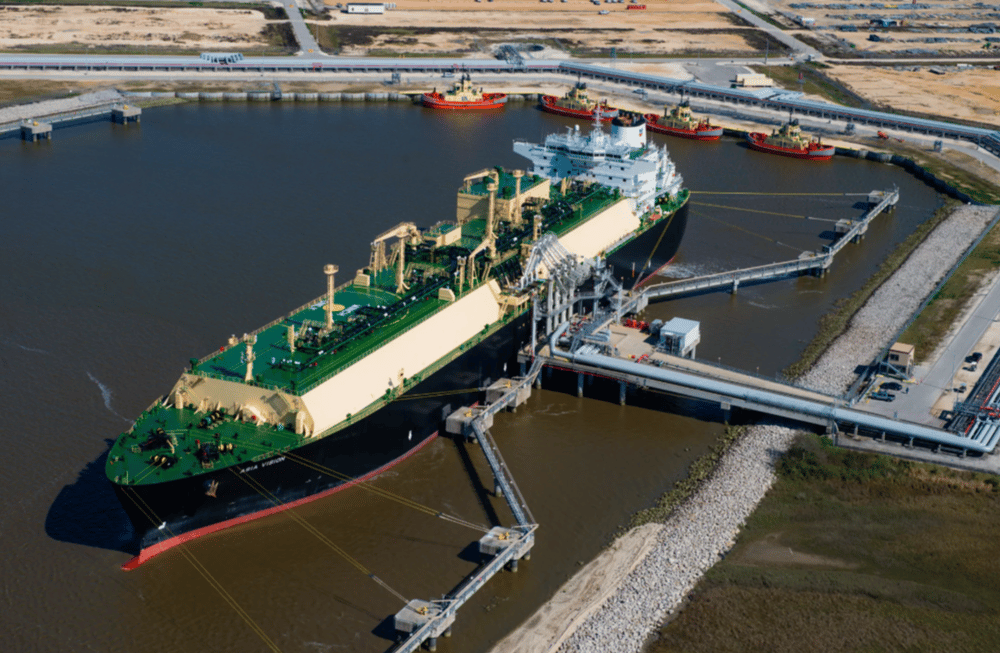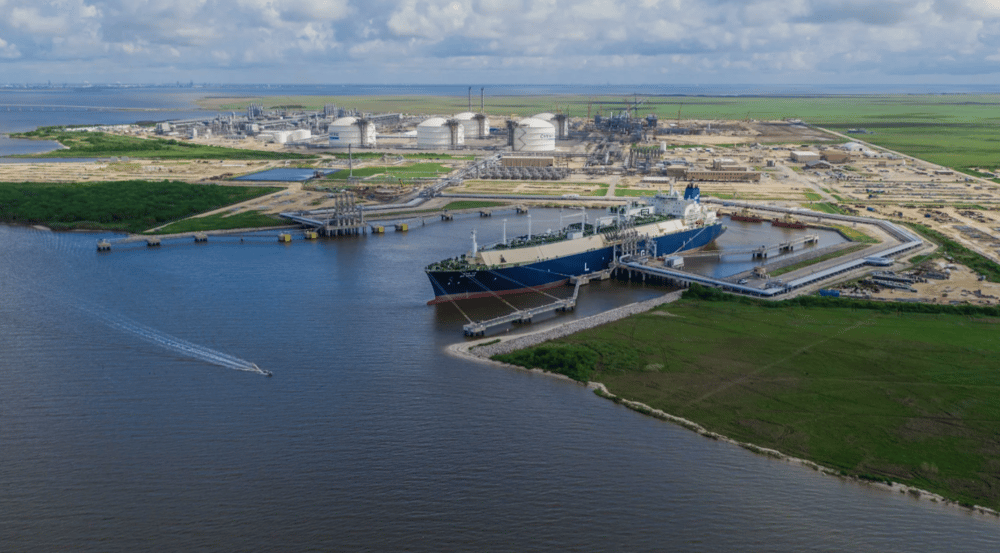U.S. LNG Exports Dip in May Amid Maintenance at Cheniere’s Sabine Pass Facility
The United States, the world’s largest exporter of liquefied natural gas (LNG), reported a month-over-month decline in LNG shipments in May 2025. The slowdown, primarily driven by scheduled maintenance at key export terminals—including Cheniere Energy’s $LNG Sabine Pass facility—has marginally affected global LNG supply dynamics at a time of heightened sensitivity to changes in U.S. export flows.
According to preliminary LSEG vessel-tracking data, U.S. LNG exports totaled 8.9 million metric tons in May, down from the record 9.3 million tons shipped in April. The temporary dip underscores how infrastructure-level constraints in the U.S. LNG export system can influence global spot prices and supply availability.
Operational Constraints and Their Impact on LNG Supply
The month-over-month decline in exports comes despite persistent global demand, especially from Asia and Europe. The U.S. LNG industry, though structurally robust, remains susceptible to seasonal maintenance cycles, equipment overhauls, and weather-related disruptions.
May’s output decline was felt across nearly all U.S. LNG terminals, according to LSEG data, but the most impactful bottleneck was at Cheniere Energy’s Sabine Pass terminal in Texas, which has an annual nameplate capacity of 30 million metric tons. The operator confirmed that the site underwent routine maintenance during the month, temporarily curtailing its liquefaction output.
While maintenance is a standard operational procedure, it temporarily reduces liquefaction capacity, thus constraining outbound cargoes. This creates short-term tightness in the global LNG market, where the U.S. now plays a pivotal balancing role, particularly for European buyers seeking to offset reduced pipeline flows from Russia.

Quick Facts
U.S. May LNG exports: 8.9 million metric tons
April record exports: 9.3 million metric tons
Main constraint: Maintenance at Sabine Pass (Cheniere Energy)
Facility capacity: 30 mtpa (million tons per annum)
Data source: LSEG vessel tracking
Global context: U.S. is top LNG exporter worldwide
Market effect: Short-term supply tightness, possible upward price pressure
Market Reaction and Industry Commentary
Market watchers have noted the price sensitivity to even minor disruptions in U.S. LNG flows. Given the growing reliance on U.S. LNG as a swing supplier, particularly in Europe and South Asia, any reduction—no matter how temporary—can influence spot market pricing and futures volatility.
Industry analysts indicate that while the maintenance-driven decline is temporary, it underscores the fragility of global LNG supply chains, which now depend heavily on U.S. terminals. Traders have observed moderate upward pressure on benchmark JKM (Japan Korea Marker) and TTF (Title Transfer Facility) prices in late May as reports of reduced U.S. exports became more visible.
Despite the temporary nature of the disruptions, energy security concerns remain top of mind for major importers, especially as natural gas inventories begin seasonal rebuilding ahead of the Northern Hemisphere winter.

Key Takeaways
U.S. LNG exports fell by 400,000 tons in May vs. April due to maintenance.
Cheniere Energy’s Sabine Pass facility was a central bottleneck.
The U.S. remains the world’s largest LNG exporter by volume.
Temporary declines can influence global benchmark prices like JKM and TTF.
Maintenance and infrastructure constraints highlight the need for diversified supply.
Short-term volatility in LNG flows reinforces Europe and Asia’s reliance on U.S. cargoes.
Conclusion
May’s decline in U.S. LNG exports—a result of scheduled maintenance rather than structural weakness—offers a critical reminder of the supply-side dynamics shaping global energy markets. As Cheniere Energy (LNG.N) and other U.S. operators continue to expand capacity and optimize operations, the role of the United States as a key LNG swing supplier remains vital. Temporary disruptions, even routine ones, now carry global weight, influencing prices, inventories, and strategic planning across continents.















Comments